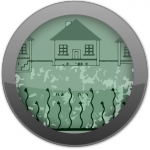Indoor Vapor Intrusion – Radon

What You Need to Know
Radon is a radioactive, colorless, odorless, tasteless naturally occurring gas that originates from uranium decay found in nearly all soils in the USA
Radon quantities vary from state to state, county to county, city to city, and building to building
Second leading cause of lung cancer after smoking in the USA
Highest impacts- lowest building levels
World Health Organization (WHO) lowered action level to 2.7 pCi/L
What You Need to Do
NOT REQUIRED to do anything…yet
Most states have local statutes that must be followed including disclosure and licensure requirements
EPA- voluntary program only
Myths and Misconceptions
There is no need to be concerned with radon if you are located in a state with low radon levels-FALSE
A radon level of <4pCi/L (picocuries per liter) of air is safe-FALSE
It is too complicated and expensive to fix a radon problem if one exists in a building-FALSE
Unless you are a smoker, radon is not really a big health issue-FALSE
Expert Services:
Insurance
Claims: Prevention and Response
- Site Investigations/Inspections
- Loss Mitigation Protocol Development
- Creative Scope of Work Development
- Project Oversight
- Environmental Sampling
- Cause and Origin Investigation
- Emergency Response
- Client Interface
- Communication/Alert Development
- Liability Exposure Minimization
- Expert Consultation
Underwriting: New Product Development and Risk Assessment
- New and Emerging Risk Education-Focus on New Areas of Coverage Opportunity
- New and Emerging Product/Technology Applicability to Underwriting Coverage
- Recommendations for Coverage Expansion Based on Risk Minimization Strategies
- Policy Language Review/Development Based on Industry Specific Issues
Due Diligence: Investigation, Auditing, Verification and Risk Assessment
- Project Oversight Ensuring Compliance with Policy Coverage
- Immediate Communication re Project Issues Impacting Policies
- Detailed Reports of Project Findings/Oversight with Recommendations
- Cost Estimate Development Based on Construction/Remediation Options
- Phone Surveys/Desktop Reviews Focusing on Issues of Potential Concern
Remediation Cost Auditing and Risk Quantification
- Review/Audit of Contractor Invoices
- Scope of Work Performed Analysis (Best Practices, Regulatory Compliance)
Expert Testimony
- Environmental Risk
- Healthcare Risk
Education and Training: Claims and Underwriting
- Seminars/Webinars on Environmental/Healthcare Issues Focusing on Claims/Underwriting Risk
- Seminars/Webinars on Emerging Issues and Policy Impact as well as Coverage Expansion Opportunities
- White Paper Development
Insurance Toolkits: Claims and Underwriting
- Development of Underwriting Applications for Healthcare/Environmental Risk
- Development of Value Added Risk Management Checklists/Protocols for Insureds
- Operations and Maintenance Programs for Water Intrusion Risk Management, Asbestos, Lead Based Paint
- Hazard Assessment Critical Control Point Programs (HACCP)
Insurance Risk Alert Service
- Development of Insured Alert Communications re Emergency Healthcare/Environmental Risk
- Development of Employee Alert Communications re Emergency Healthcare/Environmental Risk

